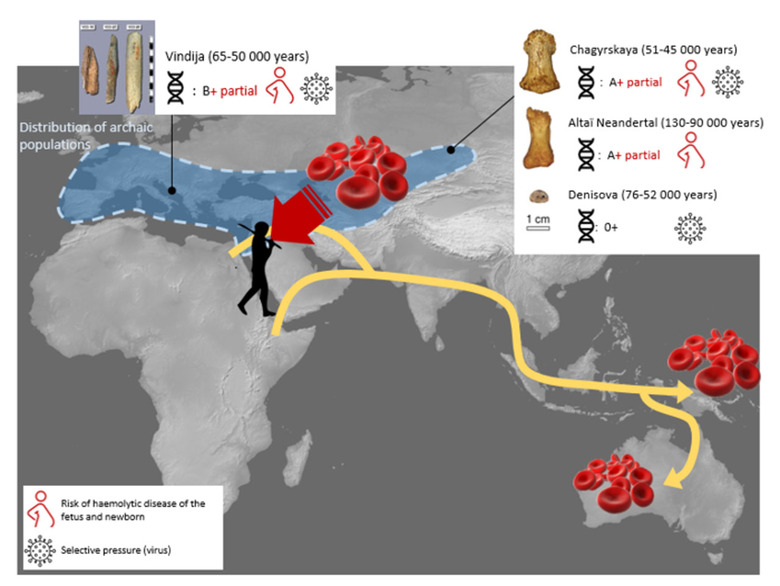Scientists Complete Blood Group Analysis For Neandertal And Denisovan
Researchers have completed blood group analysis for three Neandertals and a single Denisovan. The team that completed the research is from the Anthropologie Bio-Culturelle, Droit, Éthique et Santé research group. Data gathered by the group confirms the hypothesis indicating an African origin, Eurasian dispersal, and interbreeding with early Homo sapiens.
Researchers also found evidence of low genetic diversity and possible demographic fragility in the ancestral groups of modern humans. Researchers found that the extinct lineages of the Neandertals and Denisovans were present in Eurasia from 300,000 to 40,000 years ago. While prior sequencing work for 15 Neandertal and Denisovan individuals had been completed, the study of the genes underlying blood groups hadn't been investigated.
Despite the lack of investigation into the blood groups, blood group systems are the first markers used by anthropologists to reconstruct the origins of common populations along with their migrations and interbreeding. The new study examined previously sequenced genomes of one Denisovan and three Neandertal females that lived 100,000 to 40,000 years ago to identify blood groups and investigate what those blood groups could reveal about the evolutionary history of humans.
There are 40 known blood group systems, and the team used the seven typically considered for blood transfusion purposes, including the ABO system and Rh. While the findings supported some previous hypotheses, they also offered new data. For example, it was long thought that all Neandertals were type O, but the team found the ancient hominids displayed the full range of ABO variability observed in modern humans.

The worker also discovered alleles that support African origins for Neandertals and Denisovans. It was also discovered that Neandertals had a unique Rh allele that is absent in modern humans, with the exception of one Aboriginal Australian and one Papuan. Those individuals could be evidence of interbreeding between Neandertals and modern humans. Researchers also confirmed that there was little genetic diversity in these ancient hominids. They could have been susceptible to hemolytic disease of the fetus and newborn due to maternal-fetal Rh incompatibility.
